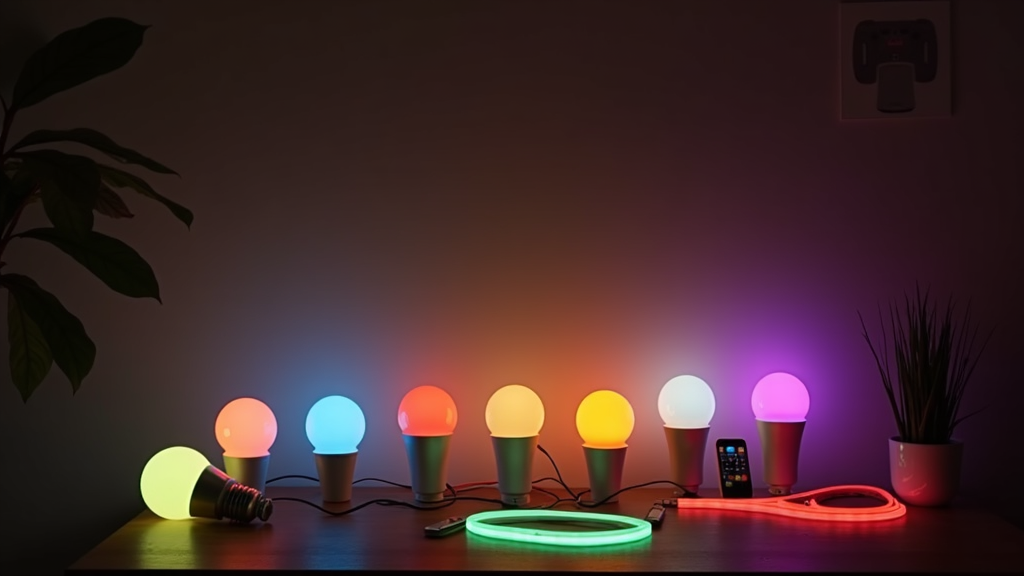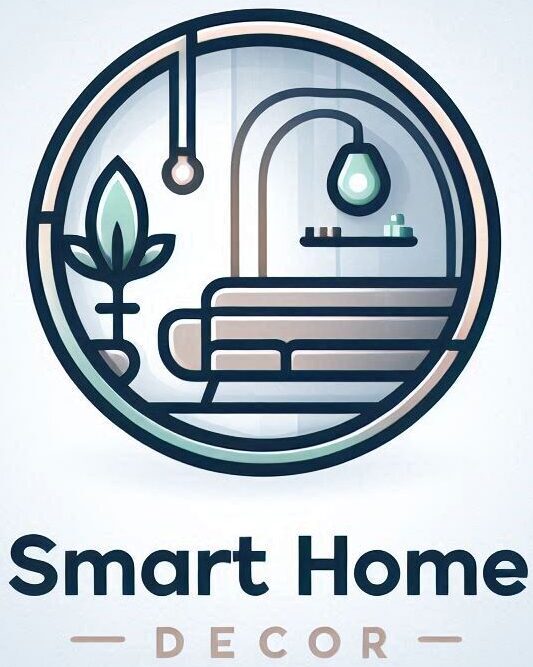Smart lighting keeps getting more advanced, and in 2024, there’s no shortage of choices from all the top brands. Whether you want better convenience at home, next-level cool color effects, or energy savings, smart bulbs keep evolving to meet different needs. In this guide, let’s look at the best options right now, how the most popular brands compare, and what’s next for smart lighting. By the end, you should get a sense of which lighting setup might work best for your space—there’s no one-size-fits-all.

Are LED Lights Still Popular in 2024?
LED lighting is as popular as ever in 2024. In fact, LED bulbs have basically become standard in both new construction and upgrades because of their energy efficiency. They use way less power and have a much longer lifespan than traditional incandescent or CFL bulbs. Today’s LEDs shine bright, offer a spectrum of color choices, and make smart lighting systems practical for a wider range of spaces. Most of the best-selling “smart” bulbs on the market are LED-based, and they keep outselling other types by a wide margin. Even as trends come and go, the reliability, performance, and value of LED bulbs help them stay on top year after year.
Top Smart Light Brands to Know
While there are tons of brands out there, a few really stand out for their reliable products, easy-to-use apps, and solid compatibility with smart home platforms like Google Assistant, Alexa, and Apple HomeKit. It pays to check out these key players if you want a dependable experience:
- Philips Hue: A classic pick for those looking for strong performance and accurate colors. The line includes bulbs, lamps, outdoor fixtures, and cool LED strips. It’s a huge smart lighting ecosystem.
- LIFX: Famous for super-bright bulbs and a wild selection of colors. All the bulbs work over WiFi—no hub needed—and connect easily to most voice assistants. LIFX even has some color features other brands don’t.
- Nanoleaf: Known for artistic panels and light bars that pull double duty as wall art. The modular shapes and next-level cool color displays make them stand out, plus they can react to music or touch.
- Govee: A budget-friendly choice that’s spreading fast among smart lighting fans. The app is user-friendly, and the product line (especially strips and floor lamps) covers a lot of ground if you want affordable upgrades.
- TP-Link Kasa: For those who want straightforward, reliable bulbs that set up quickly, Kasa bulbs are a strong value. They play well with Alexa and Google Assistant, so integration is simple.
Each of these brands brings something unique, so picking the best one depends on your own priorities. For a full-home system with deep custom scenes, Philips Hue is incredibly flexible. For affordable bulbs or strips in a few spots, Govee or Kasa are great picks. Nanoleaf wins for creative accents. Take a few moments to check out each brand’s specialty because one might fit your vision better than the rest.
Comparing Popular Smart Bulb Features: What Actually Matters
With all the marketing noise out there, it helps to focus on the features that actually make a difference day-to-day. Here’s what matters most when picking the right smart bulb for your place:
- Compatibility: Does the bulb work with your preferred app or voice assistant? Multiplatform support is best if you mix brands or devices.
- Color Range: Some bulbs offer only warm/cool whites; others open up millions of colors, dynamic scenes, and effects. If mood lighting or parties are your thing, broader color range is a key feature.
- Brightness: Measured in lumens. LIFX is famous for extra-bright bulbs, but Philips Hue hits the sweet spot too. If your room is big or has open spaces, a few extra bulbs might be needed.
- Connection Type: WiFi is the easiest to set up. Zigbee and Bluetooth bulbs need a hub or closer connections but may help your network perform better with lots of lights.
- App Experience: The app should be user-friendly with good automation, schedules, scenes, and updates. Look for extras like syncing with music or TV—especially if you want next-level experiences.
- Energy Use: Even among LED bulbs, some brands use less power than others. Philips Hue and Govee both get good marks for keeping energy costs down.
For real-world use, app quality and reliable everyday performance are what people notice most. No one likes bulbs that disconnect or lag behind commands. Before buying, glance at buyers’ reviews and expert roundups—they often mention these points.
Quick Guide: Picking the Right Smart Bulb for Your Needs
You’ve got plenty of options, but a few quick tips can help you quickly narrow the field and find what really fits:
- Budget Concerns: Lighting your entire home? Value-oriented brands make it much more affordable. Govee and TP-Link Kasa offer tons of flexibility for less.
- Customization and Scenes: Want to set up advanced scenes or mood lighting (such as for movie night, reading, or gentle sunrise wake-ups)? Philips Hue, LIFX, and Nanoleaf are your best bet.
- Voice/App Control?: If you’re already using voice assistants, consider bulbs with top integration. Philips Hue, LIFX, and Kasa tick the boxes, but setup steps vary between platforms.
- Different Fixtures and Rooms: Strips are ideal for cabinets or stairs, while bulbs are best for standard fixtures and lamps. For artistic/accent lighting, Nanoleaf and Govee are front-runners.
Making a short list of “must-have” features and deciding on a spending limit before you start will help you dodge lots of second-guessing later.
Things to Know Before Upgrading Your Lights
Upgrading your lights with smart bulbs is one of the simplest ways to step up your home. However, these tips will make your experience much smoother:
- WiFi Reach: WiFi bulbs need a strong signal everywhere you want to put them. If you’re using Zigbee with a hub, make sure your hub reaches the bulbs throughout your home.
- Switch Compatibility: Watch out for flickering or buzzing, especially if you have old dimmers or unusual switches. Some smart bulbs need a standard switch—or you can opt for a dedicated smart dimmer instead.
- Control by Multiple Users: If others in the household want access, make sure the brand offers easy sharing in the app. Philips Hue and Kasa handle this especially well.
- Outdoor Needs: Not all smart bulbs are made for outdoor use. Govee, Hue, and certain Kasa models have weather-resistant versions, but always check the packaging.
Will Anything Replace LED Lights in the Near Future?
New lighting tech like OLED and microLED is making headlines, but for home lighting, standard LED still rules the roost. OLED panels are starting to show up in fancy TVs and high-end fixtures—offering super-thin, flexible lighting. However, for most homes, they’re still expensive and lag behind LEDs for durability. MicroLED is another up-and-comer, but barely exists in consumer lights, and the cost is still well above most budgets. For at least the next five years, expect LED to remain king at home, while new tech slowly trickles in at the luxury end.
Most Popular LED Brand Worldwide
If you’re wondering which LED smart lighting brand leads the pack, Philips Hue is still way out front worldwide. Their product ecosystem is huge, with everything from single bulbs to outdoor strips and lamps. They last for years, the ecosystem keeps growing, and third-party compatibility is top-notch. While others like LIFX and Govee are gaining ground, Hue still tops recommendation lists and tech magazine writeups around the globe.
Expert Tips and Common Challenges with Smart Lighting
Getting your first smart bulbs running is quick if you follow the steps, but there are a few common hiccups and some solid workarounds:
- Patience During Firmware Updates: When you plug in new bulbs, brands like LIFX or Nanoleaf often prompt for updates right away. Don’t rush or cancel these—updates help squash bugs and even add new functions.
- Grouping is a Time Saver: Set up groups of bulbs by rooms or zones in your app. It makes lighting control—and automation—much easier.
- Let Automations Help: Schedule routines for waking up, leaving, or coming home. Sunrise or sunset automations are some of the best for taking advantage of smart bulbs without pulling out your phone every time.
- Choosing Color Temps: Cooler whites in kitchens or workspaces, and softer, warmer ones for bedrooms, go a long way toward making each room comfortable and inviting.
Hit a problem (like a bulb that won’t appear in your app)? Try rebooting your WiFi router and resetting the bulbs. Most brands have thorough FAQ pages, and a quick search there will solve most odd issues. Online communities can be a lifesaver for troubleshooting rare quirks with integration or automation.
Frequently Asked Questions
What’s the best smart bulb for 2025?
The smart bulb space changes constantly, but right now Philips Hue and LIFX stand out for their reliability, powerhouse feature sets, and broad compatibility. Hue is top-notch if you want an all-in-one ecosystem, while LIFX wins for extra-bright bulbs that don’t need a hub. Both brands update their firmware frequently, keeping bulbs current and futureproofed for at least the next few years.
Are smart lights worth it?
For many people, having remote access, scheduling, and creative color options makes them totally worth it. They’re highly energy efficient and can save money on your electric bill. If you’re already running a smart assistant or other home automation, adding smart bulbs is a simple next step.
Do smart bulbs still work if WiFi is down?
WiFi-connected bulbs lose remote/app features when the internet is out, but you can still use your traditional wall switch. Zigbee bulbs (like Hue with the Bridge) might preserve some app features even if WiFi is spotty. In any case, make sure you can still turn lights on or off manually if needed.
What is the most popular LED light brand?
Philips Hue holds the top spot as the world’s most popular LED smart lighting brand. Their bulbs are reliable, widely supported, and offer tons of options for both rookies and longtime enthusiasts. LIFX and Govee are rising stars for more specialized needs, but Hue remains the go-to choice for most smart lighting setups.
Final Thoughts
Choosing smart bulbs is easy once you know what to look for and consider your real needs—be it color, brightness, room size, or platform compatibility. LED bulbs are still leading by a mile, and all the major brands serve up user-friendly, energy-saving options. Once you get comfortable with how the different styles, apps, and features work, you’ll quickly zero in on a setup that blends perfectly with your lifestyle. There’s no reason to rush; start with one or two rooms, experiment, and enjoy lighting up your home in your own unique style!
